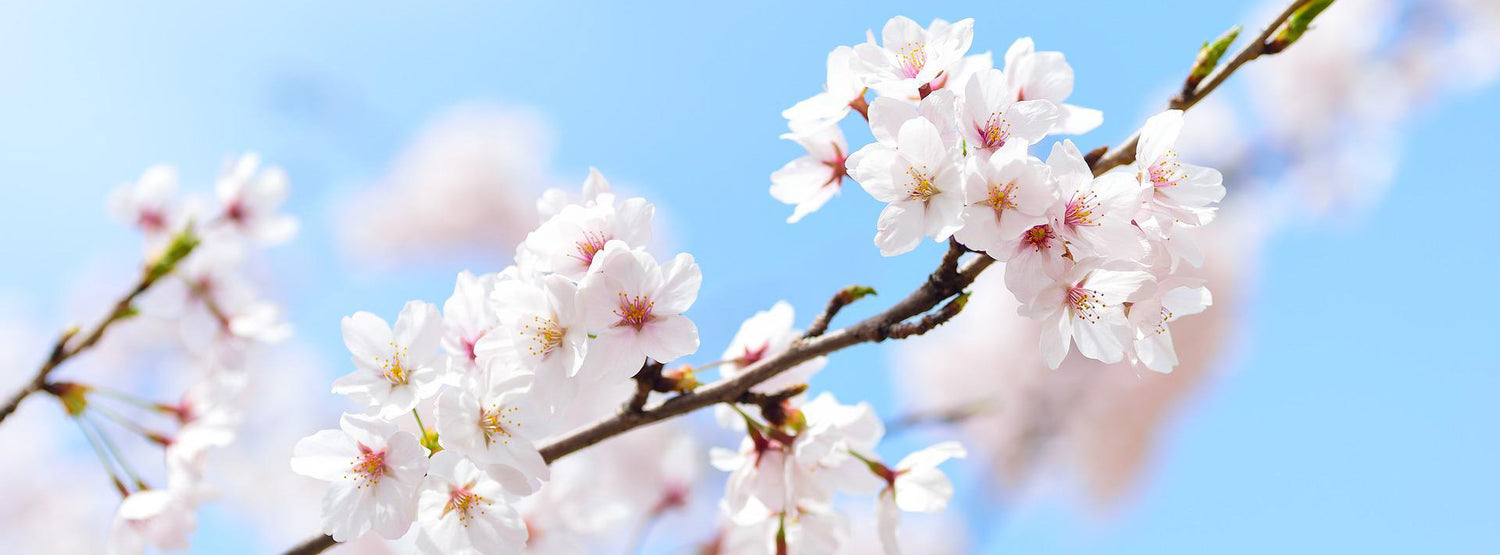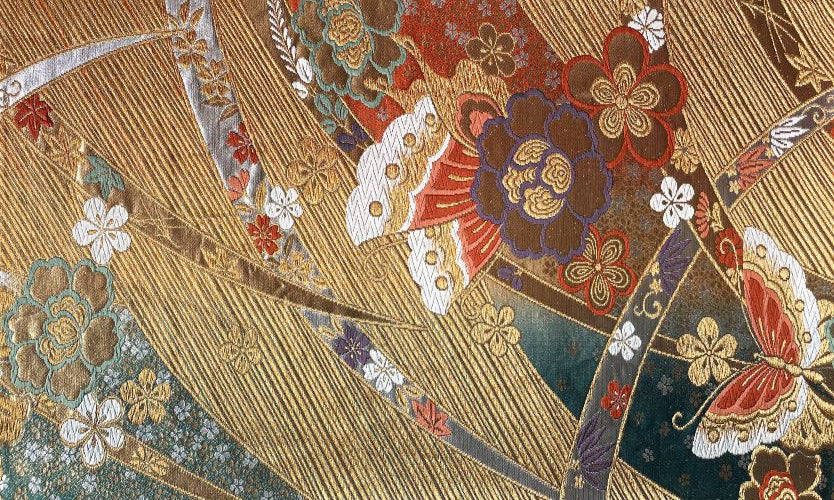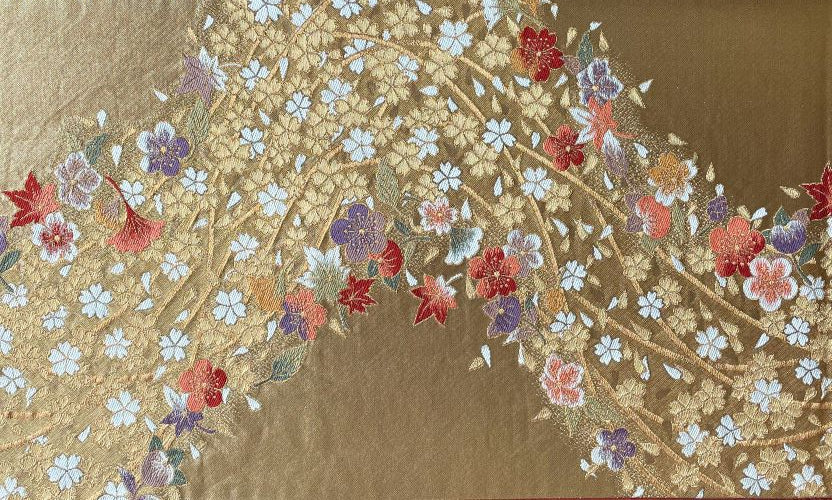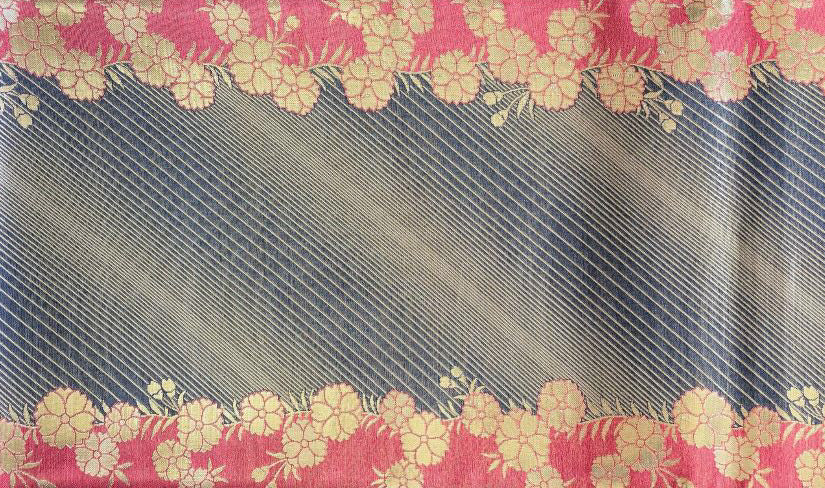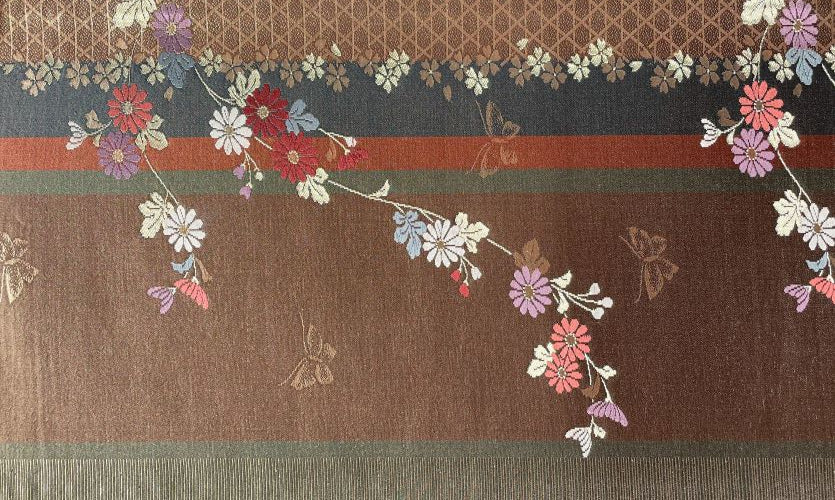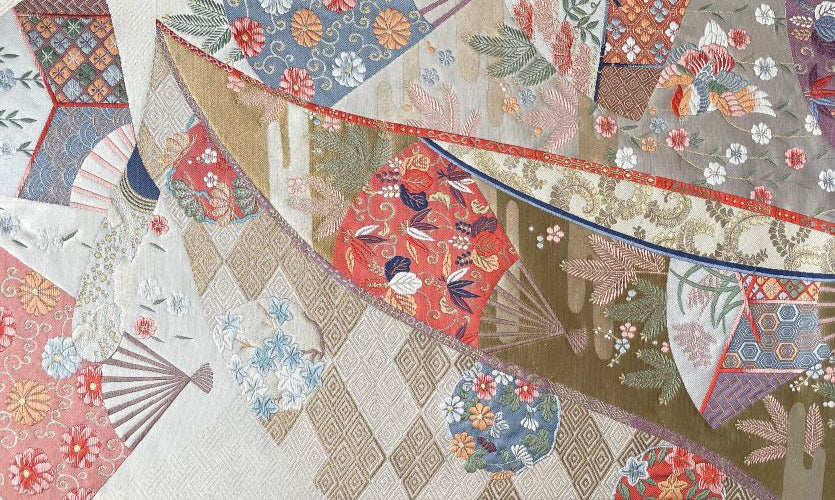桜 -Cherry blossom-
貴族が桜の観賞を楽しむようになったのは平安時代、以降文学や美術にも登場するようになりますが、それまでは梅の観賞の方が一般的だったといわれています。山桜をモチーフとしたものから始まり、八重桜、枝垂れ桜と種類が増えていき、江戸になる頃には「桜川」や「桜楓」、「花筏」などの組み合わせ文様も見られるようになりました。
During the Heian period, the enjoyment of cherry blossom viewing became a pastime for the aristocracy, later finding its way into literature and art. However, it's noted that before this era, plum blossoms were more commonly appreciated. The motif started with mountain cherries and gradually expanded to include double-flowered cherries, weeping cherries, and by the Edo period, intricate patterns such as "Sakuragawa" (cherry river), "Sakuramomiji" (cherry and maple), and "Hanabune" (flower boat) emerged. This evolution reflects the shift in cultural preferences and the blossoming diversity of cherry blossom-inspired designs over the centuries.
八重桜 -Double-flowered cherry blossom-
通常は5枚である花びらが、6枚以上あるものを八重桜と呼びます。一重の桜が散った後に開花し、花びらが幾重にも重なり合う、大変華やかな桜です。室町時代以降に使われるようになった、比較的新しい文様です。
The term "Yaezakura" refers to cherry blossoms with six or more petals, in contrast to the typical five-petaled variety. These blossoms unfold after the single-petaled ones have scattered, creating a stunning display with layers of overlapping petals. The Yaezakura, with its intricate and lavish appearance, is a relatively recent motif, coming into use from the Muromachi period onwards. This design captures the essence of elegance and beauty associated with the later blooming and multi-petaled cherry blossoms.
この文様・和柄が用いられている帯地
Obi fabrics with this Japanese pattern from the obico selection

